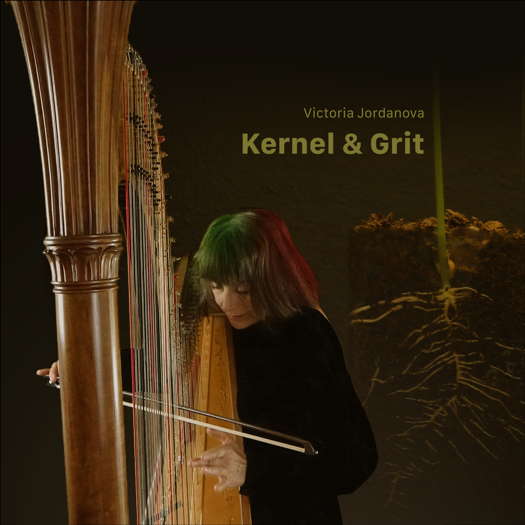PROVOCATIVE THOUGHTS: 
The late Patric Standford may have written these short pieces deliberately to provoke our feedback. If so, his success is reflected in the rich range of readers' comments appearing at the foot of most of the pages.
- Taiwan
- Amoris Imprint
- Barb Rumson
- Worshipful Company of Musicians
- Un Bel Di
- Brian Manker
- La Jolla
- John Rabe
 VIDEO PODCAST: John Dante Prevedini leads a discussion about The Creative Spark, including contributions from Ryan Ash, Sean Neukom, Adrian Rumson, Stephen Francis Vasta, David Arditti, Halida Dinova and Andrew Arceci.
VIDEO PODCAST: John Dante Prevedini leads a discussion about The Creative Spark, including contributions from Ryan Ash, Sean Neukom, Adrian Rumson, Stephen Francis Vasta, David Arditti, Halida Dinova and Andrew Arceci.

The Depths of the Singular
JOHN DANTE PREVEDINI listens to Victoria Jordanova's 'Kernel & Grit'
'... musical storytelling ... can be about the creative potential of something as humble as an unwatered seed or a layer of dust.'
Arpaviva's new release, Kernel & Grit, is a diptych of two electroacoustic works written and recorded by the US-based Serbian-born composer-performer Victoria Jordanova during the past year. The first is Kernel for solo harp and electronics, a six-movement programmatic work of about forty-five minutes exploring the archetypal life cycle of a seed. The second work is Grit for organ and electronics, a single-movement work of about thirteen minutes recorded using an eighteenth-century instrument in Mexico that was apparently selected for its disrepair. The liner notes explain that the work's title refers to plaster dust from the cathedral's walls that gradually collected inside the pipes over the centuries, distorting the instrument's sound. Jordanova performs on both instruments herself on the album. The release is digital with a limited number of physical CDs also available for purchase, and the accompanying liner notes include program notes, an artist biography and an artist interview.
Both of the works presented - as well as each of the six individual movements within Kernel - convey a phenomenal structure which is characterized above all else by an emphasis on singularity. This can be seen within multiple dimensions: the descriptive single-word titles, the use of a single pool of sonic materials to construct each movement and the unification of solo instrument and electronics into a kind of single meta-instrument for each work. By focusing our attention on one sustained, carefully crafted and symbolically contextualized gestalt at a time, Jordanova presents us with a pair of pieces that reveals the transformative within the deceptively minimal.
We begin with Kernel, whose inner movement titles provide a vivid programmatic structure: Dormancy, Germination, Shoots, Summer, Wilting and Winter. This scaffolding of symbolic contextualization encourages us to listen for sonic representation of the titular kernel within each movement and thereby discover the seed's natural life cycle across the six movements. Movement one, Dormancy, presents us with a slow tapestry of bowed notes on the harp that gradually reveal an unfolding B-Lydian scale through fundamental tones and harmonics.
Listen — Victoria Jordanova: Dormancy (Kernel)
(track 1, 1:00-1:30) ℗ 2021 Arpaviva :
In movement two, Germination, this harmonic and timbral material is transformed into quicker textures of cascading muted plucked notes in the higher registers, suggesting the falling of raindrops. In movement three, Shoots, this texture of high-register plucked notes is transformed yet again by slowing the tempo and replacing the scalar runs with individual unmuted notes that are bent through slide glissando. Meanwhile, lower notes and harmonics remain present, linking this movement to the previous two through an element of thematic continuity.
Listen — Victoria Jordanova: Shoots (Kernel)
(track 3, 0:00-0:30) ℗ 2021 Arpaviva :
Movement four, Summer, sees this open and resonant timbre of the plucked harp's upper registers transformed into very quick scalar runs that blend diatonic and chromatic harmonies. In movement five, Wilting, the tempo slows, the upper registers give way to lower registers, the harmony straddles parallel major-minor relations and the overall character of the music becomes darker and more dramatic. Finally, the sixth movement, Winter, takes the material from the fifth movement and transforms it into something more analogous to what we heard back in movement one. We are once again in the territory of very slow and spacious harmonics played on the lower notes of the harp, but here the notes are plucked rather than bowed and the implied scale has apparently shifted to B-flat-Phrygian instead of B-Lydian. Thus, by the end of all six movements of Kernel we are left with the impression that the plant has lived its life; all that remains is the next generation of seeds to be left dormant until the next cycle of germination.
Listen — Victoria Jordanova: Winter (Kernel)
(track 6, 0:00-0:30) ℗ 2021 Arpaviva :
In the final piece, the single-movement Grit, a series of sustained chords played on the historic organ are electronically made to fade in and out from silence, separated by register and degrees of dissonance and organized into phrases that seem to 'breathe' naturally in terms of formal structure. The unique dissonances of the instrument are quite striking and clearly reflect the cumulative effect of plaster dust on the organ's tuning. Meanwhile, the contrasting brief consonant harmonies are striking for the opposite reason; the major triadic sonorities seem even more 'pure' and acoustically stable than those possible in modern standard tuning, something which I imagine could be explained by an original eighteenth-century temperament system remaining partially intact on the instrument. In any case, the music struggles triumphantly under the pull of these two harmonic worlds over the course of thirteen minutes, revealing a vast kaleidoscope of sympathetic and antagonistic relationships between the audibly gritty and pristine.
Listen — Victoria Jordanova: Grit
(track 7, 8:09-8:49) ℗ 2021 Arpaviva :
In both Kernel and Grit, Jordanova draws upon a wide range of techniques - both acoustic and electronic - to craft the sonic space the pieces inhabit. Overtones, bowing, muting and the natural detritus of a centuries-old musical space all contribute to a sophisticated acoustical palette which is further enhanced by present-day audio editing technology. Yet Jordanova's approach to the electronics is surprising in its subtlety, being free of any of the obvious 'electronicisms' - if I may use such a phrase - we might normally expect from a composer employing audio processing to liberate acoustic solo instruments from the confines of their natural sound worlds. Nor do the electronics function as a synthetic contrasting voice in a duet with the instruments. Here they simply facilitate and augment the exposition of the instruments' own sound worlds through the judicious use of basic sampling, panning and layering functions. In this way, the electronics help emphasize the rich singularities of the solo instruments rather than create a sense of dualities with them.
Over the course of the two pieces on this release, Victoria Jordanova reminds us vividly that musical storytelling does not need to be a matter of taking us across distances. It can be about plunging us into the depths of the singular. It can be about savoring the contradictions, complexities and paradoxes hidden within the minuscule. It can be about the creative potential of something as humble as an unwatered seed or a layer of dust.
Copyright © 28 September 2021
John Dante Prevedini,
Connecticut, USA

CD INFORMATION - VICTORIA JORDANOVA: KERNEL & GRIT
RECENT CLASSICAL MUSIC CD REVIEWS


